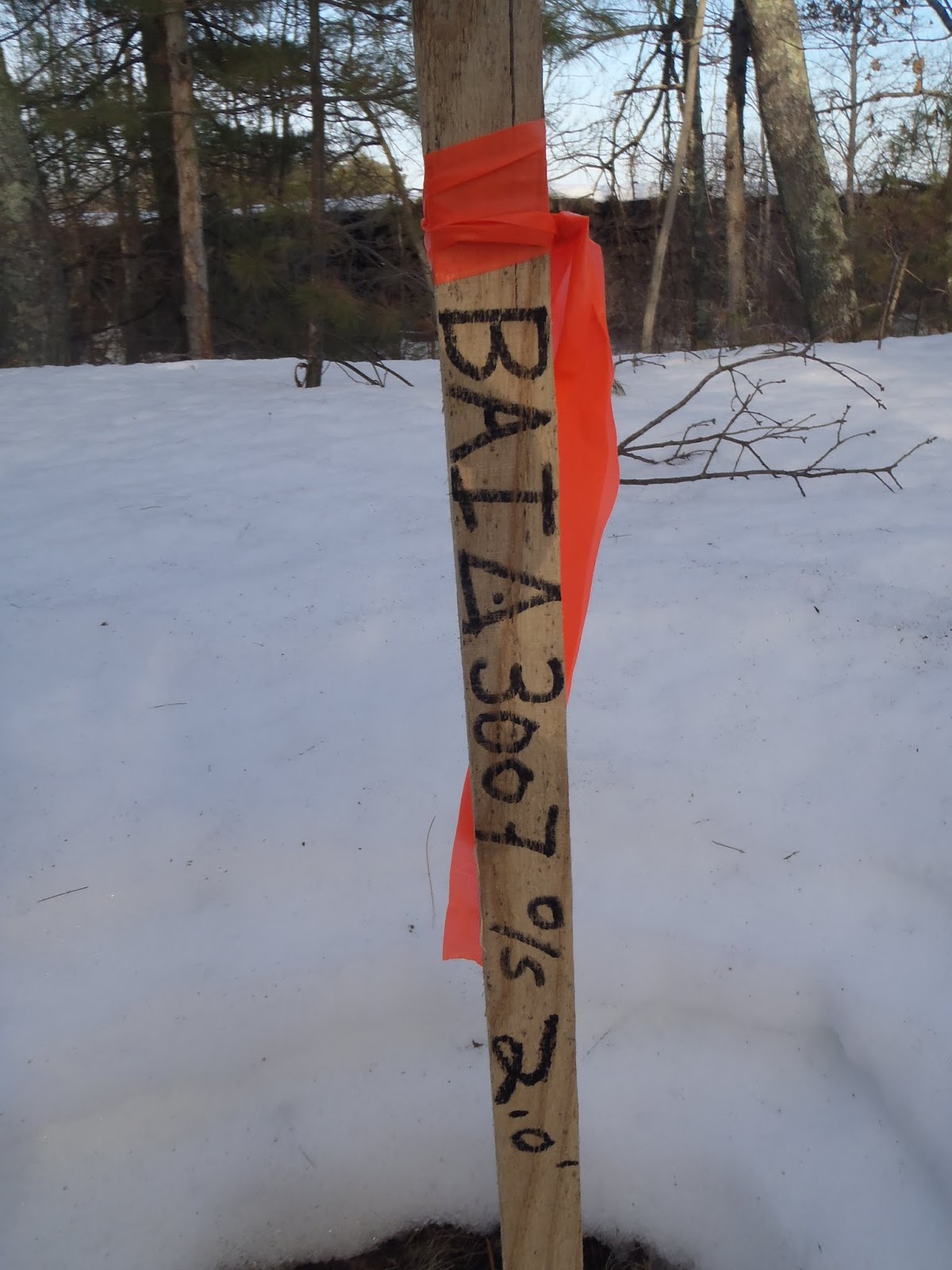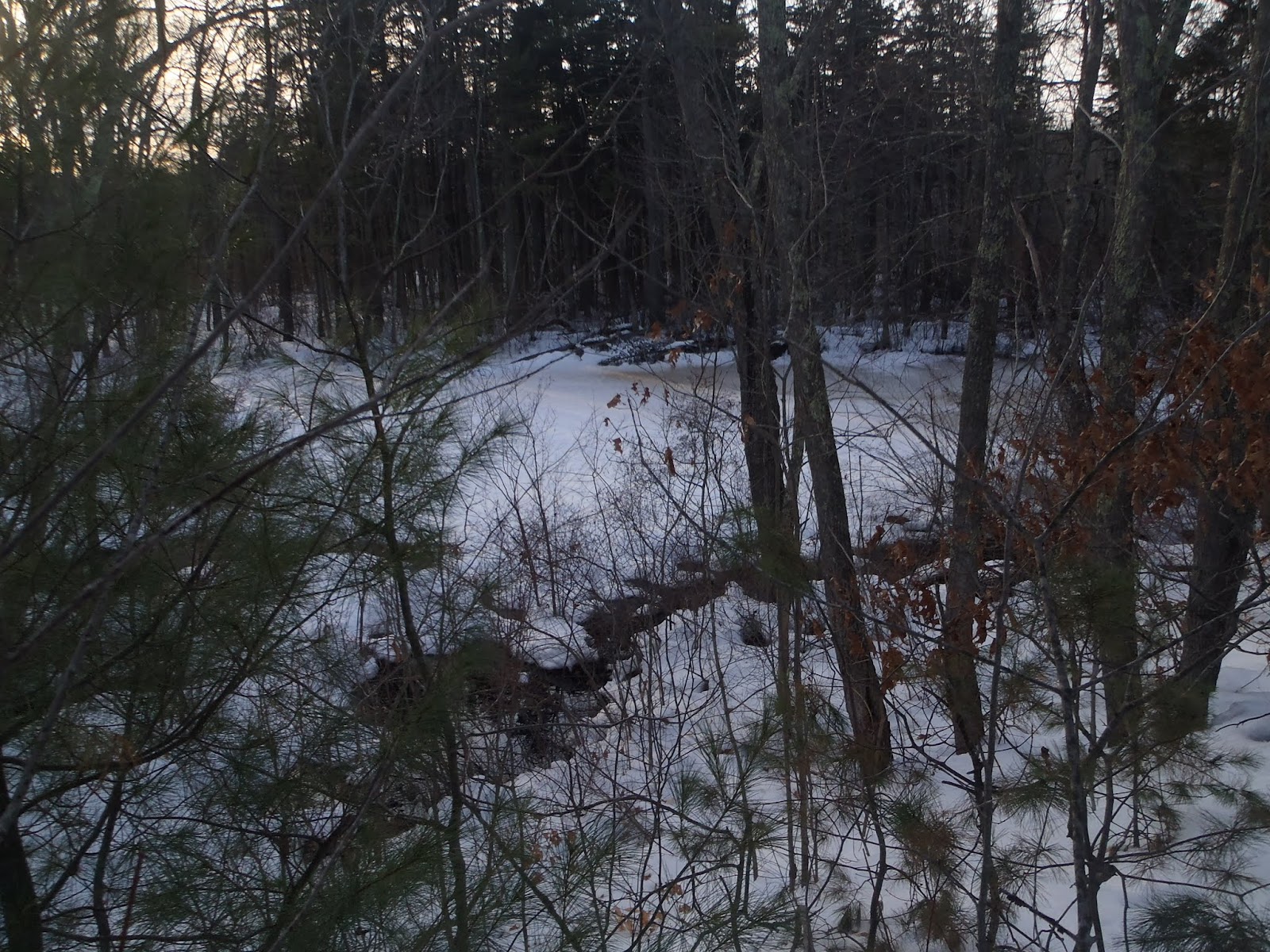Just returned from a
two-hour walk in Hockomock Swamp with Youngest.
Went in this time from intersection of power line and rt138 (Bay Path
Trail). Though we parked at 5pm, we were
still able to go all the way to the intersection with the railway embankment,
and then go north to the vocational high school that borders on the north. On the way
back we encountered youth on two ATVs and two dirt bikes. They made a muddy mess of the previously
snow-covered trail, but the damage was limited to the bank, and fairly
superficial.
We saw what appeared to be rabbit
tracks (2 foot hop, two feet forward, one mark aft) and animal scat (largish
and with animal hair, so presumably coyote), and heard several red-winged
blackbirds and another not identified.
Shrubs sporting catkin-like flower buds appeared to be alder, and only
one small marshy bit still had cattails (photo) –the rest were solid
Phragmites, curse it. One little tree with modest growth of old-man’s
beard (Usnea lichen) had trapped what looked like Phragmites fruits.
The tracks of the earth-movers
comes up the embankment from the south and continues straight on to the high school, so they
did not come out via the power line right-of-way as I had guessed. They left more diggings and neatly-labelled wooden stakes. There was some evidence of local foot traffic,
since two different foot tracks were visible coming down from the vocational high as far as
the intersection, then returning. There
are also tracks reminiscent of cross-country skis, and some of these leave the
trail for the humpy ground west of the track near the high school.
We got back to the car before
dusk, avoiding the need for the nifty new headlamp I had in my pocket. I still have no clear notion of why heavy machinery has been in the swamp.
This little patch of cattail (Typha latifolia) was all I saw. Invasive Phragmites australis
(also common on marshy roadsides) dominates the rest of that marsh visible from the path.
Thanks to thawing and some vehicle traffic, the path was fairly easy to walk on.
Hilly and humpy areas at the northern edge of the swamp invite exploration via vehicle or skis.
Various pools and streams interrupt the thickets and woods.
Youngest makes an Ill-advised Move and is therefore "skating on thin ice."
But he avoids a wetting, probably learning no good lesson at all.






























